Japanese knives are the ultimate kitchen tool. But if you’ve ever looked into buying one, you may have been overwhelmed by all the different styles and options.
At least, that’s how I felt.
Many knives are highly specialized, they can be expensive, and some aren’t practical for home use. I created this introductory guide to cut through the noise and help you (and myself) get a better understanding.
In this post, I cover the major types of knives, types of steel and construction, knife care, and history.
Japanese Chef Knife History
Long before Japan was making some of the world’s best kitchen knives, the country produced the best swords. Forging katana was a craft that is over a thousand years old.
But the need for katana began to subside during the relatively peaceful Edo Period. And the feudal era officially came to an end in 1868.
Katana making persisted through its master craftsman but on life-support. The death blow came from US-occupied Japan after WWII. General George MacArthur banned sword making and possession of katana.
So the craftsman that persisted looked elsewhere. This is when Japanese kitchen knives really took off.
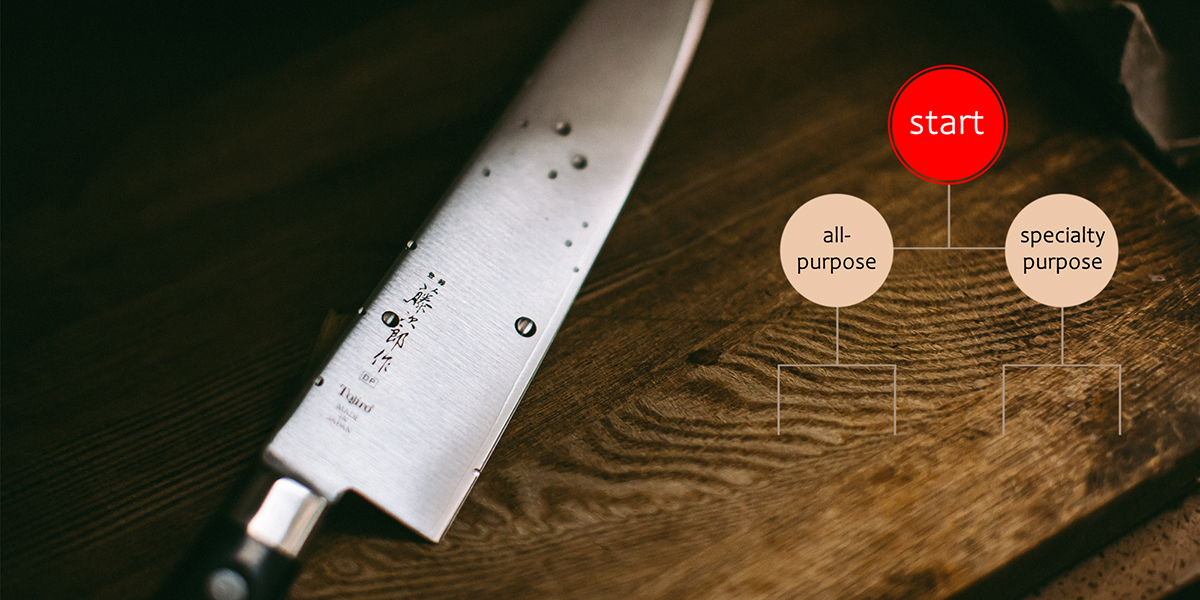
Want to find your forever knife?
Download my free Japanese kitchen knife finder.
This simple cheat sheet will guide you to the knife type
that best suits your needs.
Traditional Japanese Knives
Houcho (包丁), or kitchen knives, are hand-made the same way as katana. And traditionally, the blades are single-beveled. This means they have a single cutting edge. This type of knife is also called kataba (片刃).
Japanese knives are also designed primarily for the right hand. So when holding one, the beveled side will be on the right side. Left-handed Japanese knives are produced in smaller quantities, however.
I’ll break down the types of metal used, classes of knives, and main types later. But first, let’s look at Western knives and how they’re different from Japanese knives.
Western Knives
The classic Western chef knife is double beveled. This means it has a sharpened edge on both sides of the blade. In Japan, this type of knife is called a ryoba. And many Japanese companies make ryoba, in addition to traditional kataba.
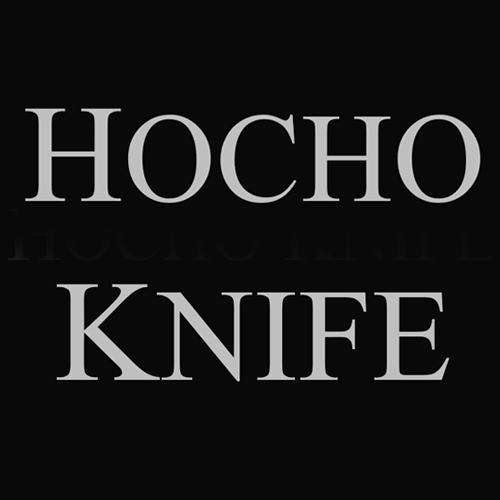
*As an affiliate advertiser for Hocho Knife, I may earn commissions on qualifying purchases.
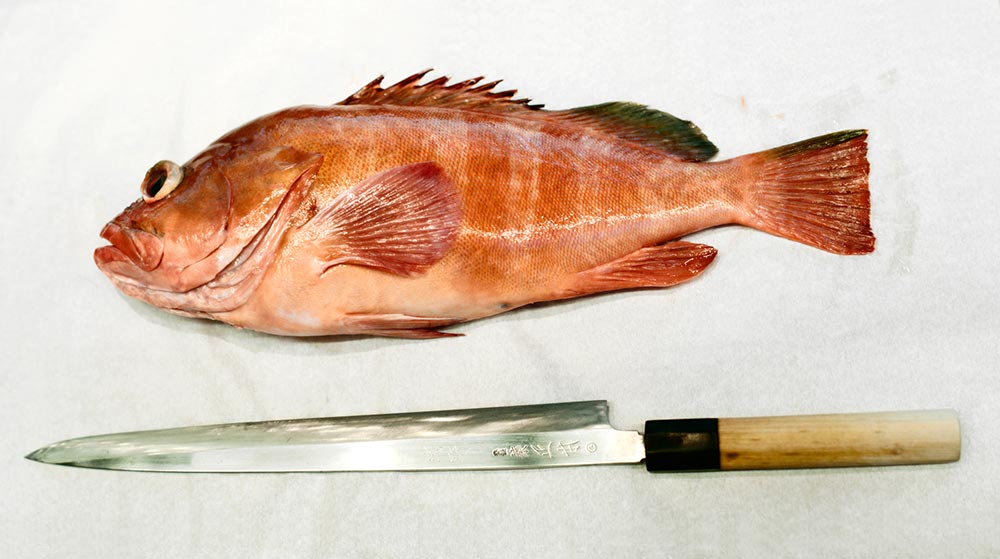
Two Classes of Japanese Knives
Another variable of Japanese kitchen knives is how they’re forged and the materials used. And they can be roughly divided into two classes: honyaki and kasumi.
Honyaki
Honyaki, or “true forged” knives, use one material. And this is very hard carbon steel. Not many honyaki knives are produced, as they’re hard to forge. They’re also harder to sharpen and are prone to chipping or breaking when improperly used.
Honyaki are best for chefs with lots of experience that can care for them properly.
The upside to honyaki knives is that they have the best edge retention of Japanese knives.
Kasumi
Kasumi knives use a combination of carbon steel and iron. The two are forged together, with the carbon steel forming the blade edge.
Kasumi means “mist” and references the hazy appearance of the iron body.
Because of the iron, kasumi knives are easier to sharpen and less brittle. However, edge retention isn’t as good as with honyaki.
Now let’s look at a couple of sub-styles of kasumi: hongasumi and Damascus.
Hongasumi are high-end kasumi. They’re made with premium materials and take more time and care to produce.
Damascus knives layer high carbon steel and iron. They have excellent edge retention.
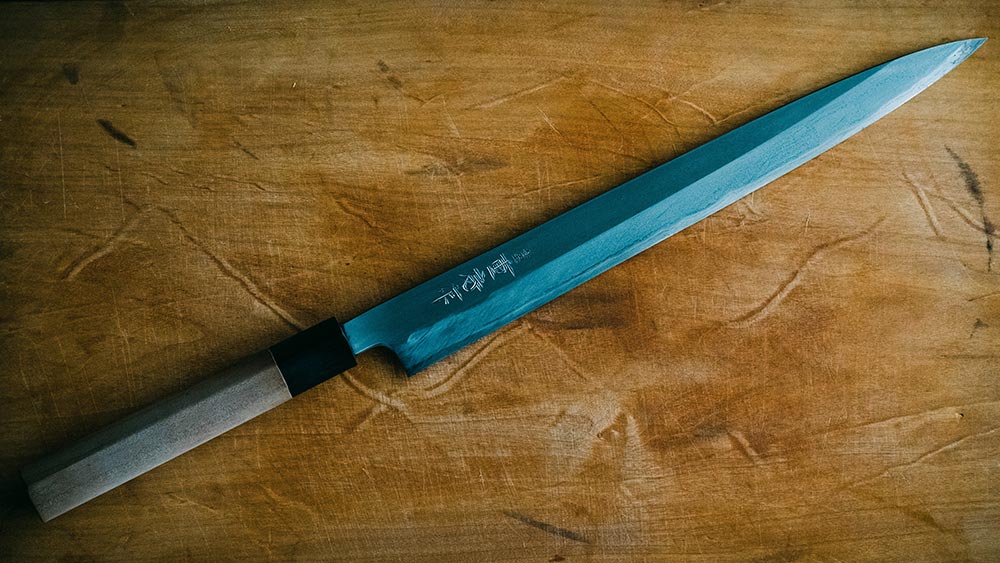
Types of Steel
Besides the two classes of Japanese knives, there are several types of steel.
Stainless Steel
Stainless steel is affordable and easy to care for. The addition of chromium makes it glossy and relatively corrosion-resistant. Stainless steel is also less brittle than high carbon steel. This means it’s also less likely to chip, and it retains its edge well. However, it’s also harder to sharpen.
High Carbon Steel
Steel is made of iron and a tiny amount of carbon. When a lot of carbon is used (0.5%-2.5%), the steel becomes harder.
The advantage of high carbon steel is a very sharp cutting edge. The downsides include increased brittleness and chipping, worse edge retention, and less corrosion resistance.
Let’s look at the three main types of Japanese high carbon steel.
Japan Steel
Japan steel, or Nihon-ko, is the most affordable high carbon steel. It will sometimes have Nihon-ko (日本鋼) stamped on the back of the blade.
White Steel
White steel is called either shiro-ko or shiro-gami. Shiro-ko has more carbon than Nihon-ko, so it’s harder and sharper. This type of steel is still fairly easy to care for but offers superior performance. This is why it’s very popular in sushi restaurants.
Shiro-ko (白鋼) or shiro-gami (白紙) are sometimes stamped onto the back of the blade.
Blue Steel
Blue steel, or ao-ko, is often the most expensive type of carbon steel. It’s forged with chromium and tungsten. This gives it superior hardness and cutting edge. And the edge retention is excellent.
Ao-ko (青鋼) or ao-gami (青紙) are often stamped into the back of the blade.
Blue steel should not be confused with Zoolander’s gorgeous pose of the same name.
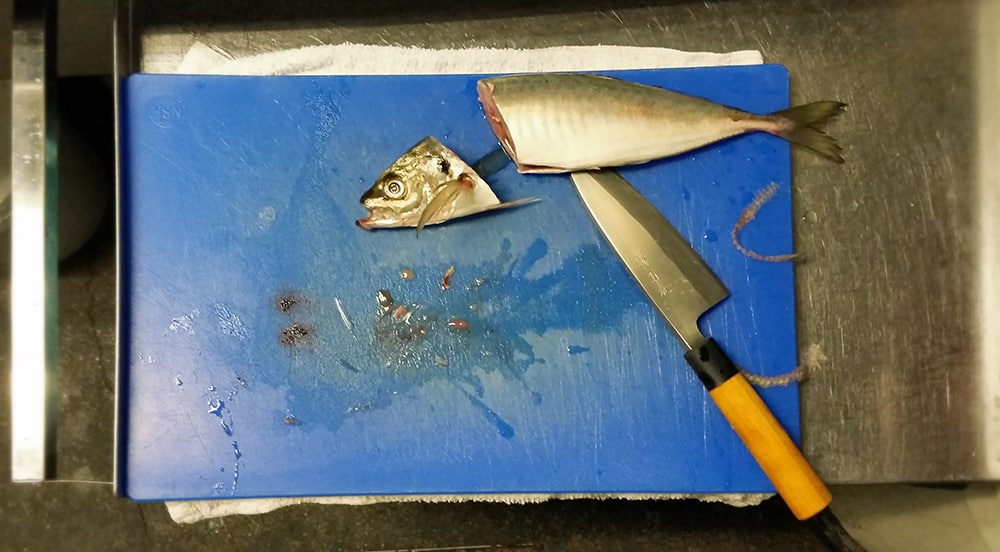
Types of Knives
Below is a list of the most famous Japanese chef knives. There are others that didn’t make the cut like the Japanese adaptations of the petty and bread knives.
Yanagi
A yanagi, or yanagiba, is a single bevel Japanese kitchen knife used for slicing boneless raw fish and seafood. And a yanagi can also be used to slice other soft proteins like roast beef.
Yanagi means “willow blade” due to the blade’s shape. It’s very long and slices in one long stroke. And a yanagi is so sharp that no downward pressure is needed. This causes less damage to the protein and equates to a better taste.
Takohiki
The takohiki is a substyle of yanagi popularized in Tokyo. It has a square head which is for arranging sashimi.
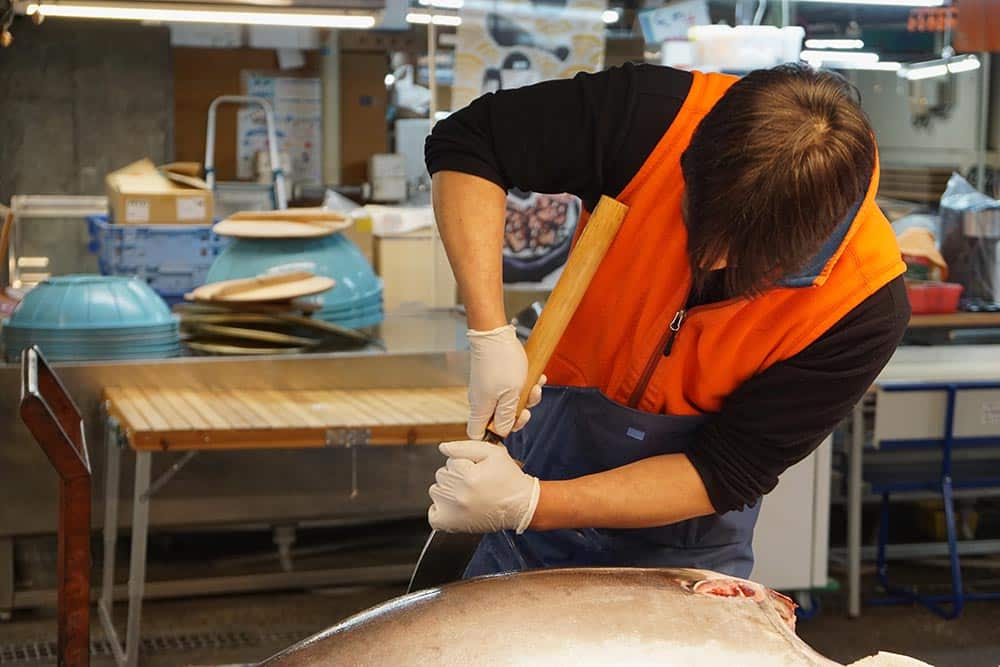
Sujihiki
The Sujihiki, meaning “muscle pulling,” is another slicer like the yanagi. But this one is a Western-style ryoba. But other than being double-beveled, it shares some similar characteristics with the yanagi.
A thin and short blade makes for frictionless, precise slicing. The sujihiki’s length also makes single-stroke cuts possible. And as an added benefit, double bevel knives are easier to maintain.
Gyuto
The gyuto, “cow sword,” is Japan’s version of the French chef knife. It’s a multi-purpose tool with a double bevel.
Japanese gyuto tend to have thinner spines and edges than chef knives. So be careful not to twist them.
The gyuto knife might be the only one you’ll ever need. Find the best budget gyuto knives here.
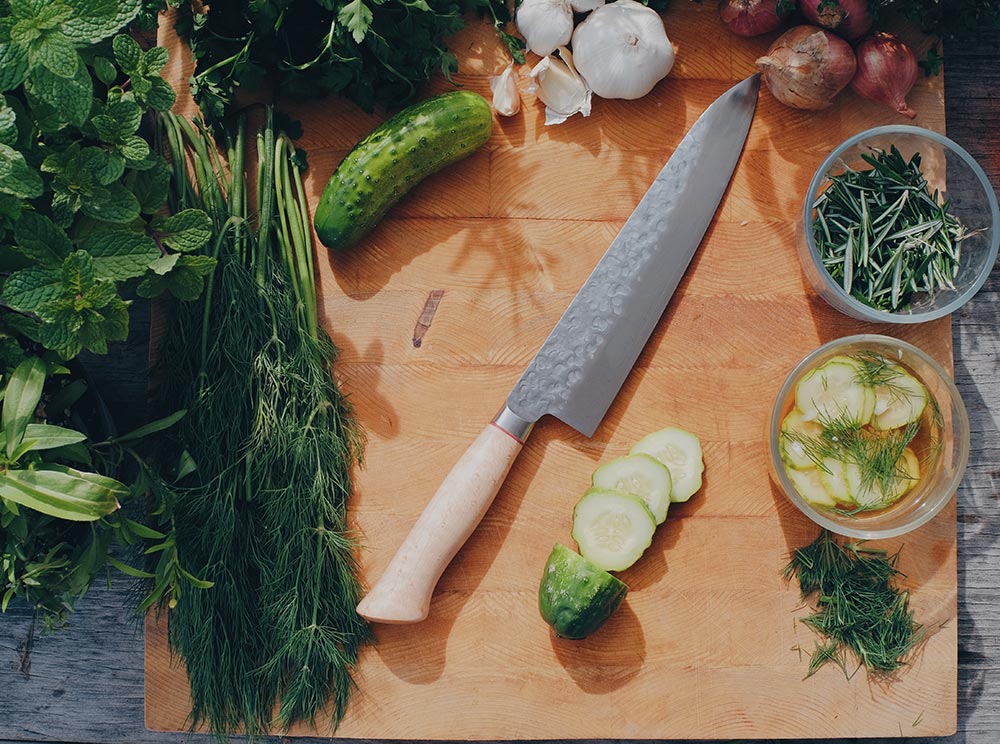
Santoku
The santoku is another multipurpose kitchen knife like the gyuto. And it’s also double-beveled.
Santoku means “three purposes.” And this refers to the knife’s ability to cut fish, meat, and veggies. But it is short and broad, so it’s better with vegetables than slicing meat.
Learn more about santoku knives here.
Bunka
A bunka is very similar to a santoku, but it has a pointed tip. This allows it to make fine cuts like mukimono.
Deba
The deba is a heavy knife for filleting fish. It’s a traditional kataba with a single edge.
And while the deba is excellent at breaking down whole fish, it’s not designed for chopping thick bones.
Yo-Deba
A yo-deba is essentially a beefier gyuto. It’s a double-beveled knife that is excellent for butchery. But it’s inferior to deba for breaking down fish.
Honesuki
A honesuki is a double bevel knife boning knife with a pointy tip. It’s especially popular for butchering poultry.
Garasuki
The garasuki is a larger variation of the honesuki. It’s used for the same things and can handle heavier bones and more work.
Kiritsuke
Confusingly, sometimes pointed tip variations of other knife styles are marketed as kiritsuke or K-tip. An example is a kiritsuke gyuto.
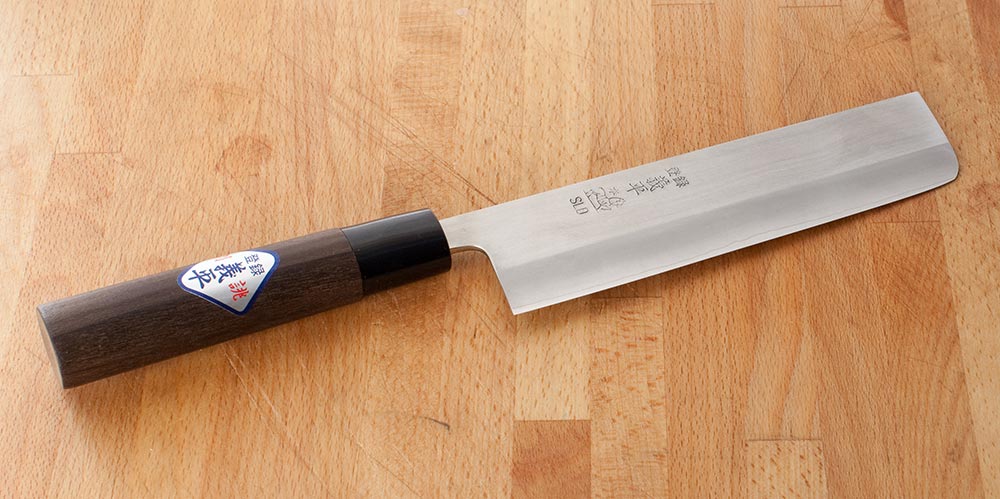
Usuba
An usuba is the traditional vegetable cutting Japanese knife. Meaning “thin blade,” its single bevel goes halfway up the knife.
The usuba is very thin and sharp. And it’s ideal for cutting using the katsuramuki technique.
Nakiri
The nakiri is the double bevel equivalent of the usuba. It’s excellent at chopping and slicing vegetables.
Mukimono
A mukimono is a small knife with a single bevel. It has a thin blade and a pointed tip.
The mukimono excels at cutting vegetables and fruit. And it’s especially useful for decorative carving.
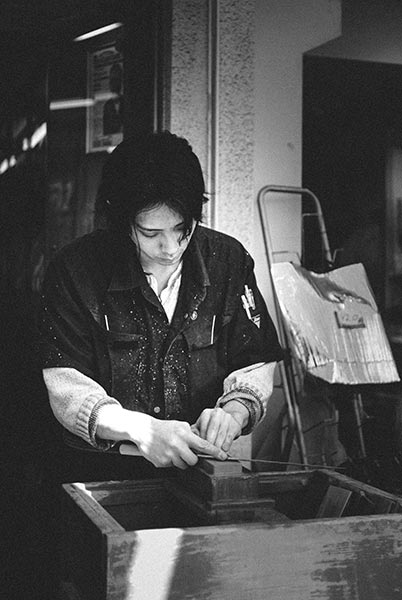
Knife Care
Quality knives are an investment, so it’s worth taking good care of them. Proper cleaning, use, and sharpening are the main considerations.
Using a Japanese Kitchen Knife
These knives are very sharp and quite thin. So when using them, use a wooden cutting board. Harder surfaces will dull the blade faster and can also lead to chips in the edge.
Proper Cleaning
Be sure to hand wash knives immediately after use with a mild detergent. Afterward, dry immediately to prevent rust. These are not knives to soak in water.
Store your knives in a cool, dark, and dry place. And for long-term storage, wipe some olive or knife maintenance oil on them and wrap them in paper.
Knife Sharpening
Knives should be sharpened as soon as they’re dull with a whetstone.
There are various grits of whetstones from coarse to fine (>3000 grit). They are either soaked or lightly wetted before sharpening. After sharpening, knives should be washed and dried.
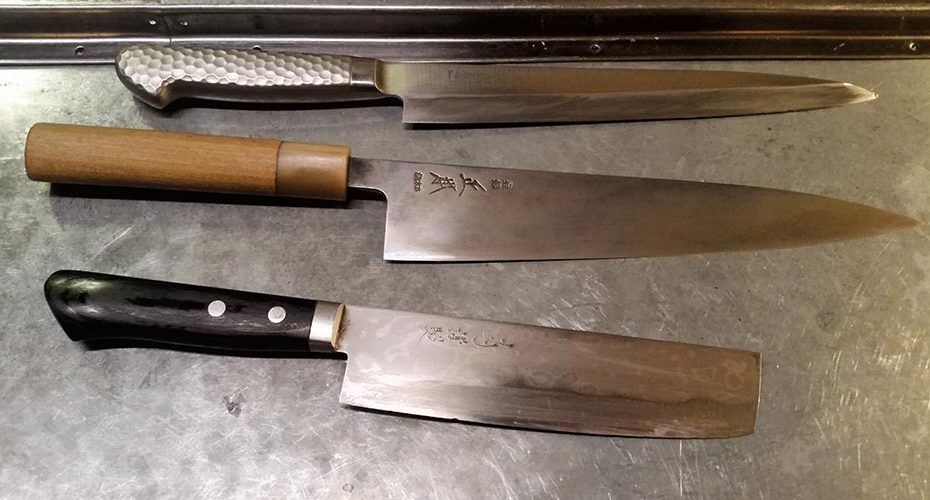
Very concise & informative. This novice says thank you.
Hi Jesse,
I appreciate your encouragement and glad the post helped!
Thank you,
Brad
Very good article. To the point and good info.
Thanks for the encouragement Ed! More kitchen knife content is on the way.
Hi Brad.
I love the nakiri in the first picture.
Hi,
Great information! I enjoy reading your blog posts on knives, and I really like this one.
You should go here to get more information.
https://www.thebambooguy.com/